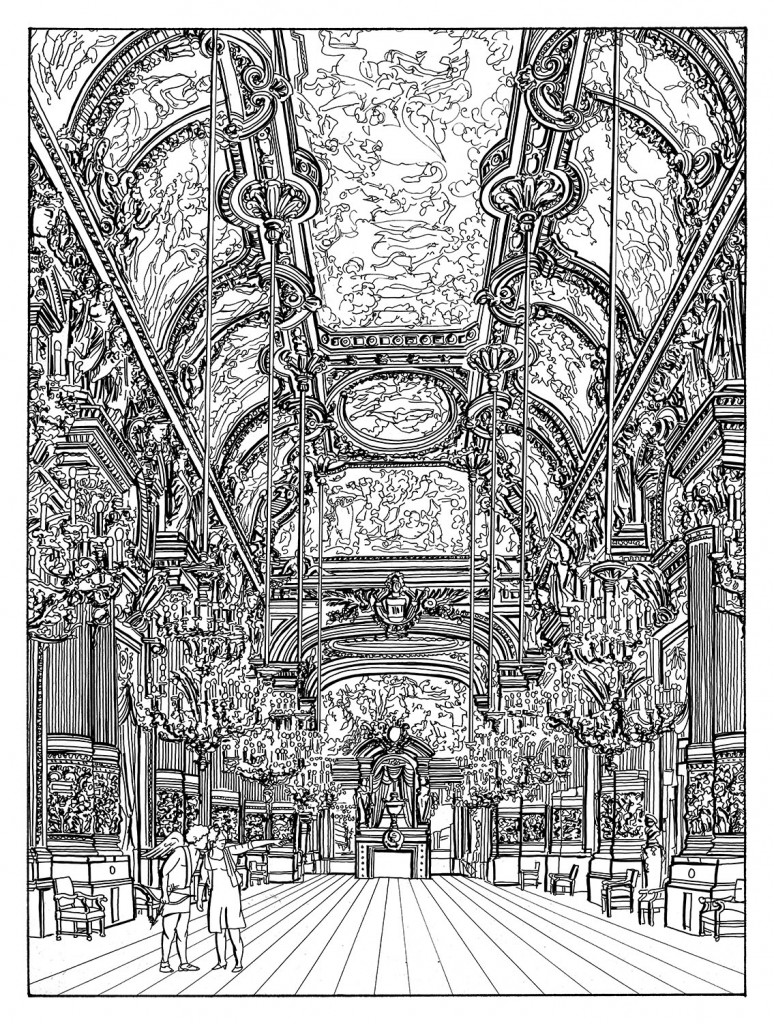
The Grand Foyer of the Paris Opera House
The Grand Foyer of the Paris Opera House: A Glimpse into Architectural Grandeur. The Paris Opera House, officially known as the Palais Garnier, stands as an iconic symbol of opulence and architectural grandeur. Among its many exquisite features, the Grand Foyer holds a special place, captivating visitors with its sumptuous design and historical significance. This opulent space is a true masterpiece of 19th-century architecture and a testament to the cultural importance of the arts in France.
The Grand Foyer, often referred to as the "Galerie de l'Opera," is a grandiose hallway stretching 18 meters in length and 13 meters in width, adorned with rich ornamentation and magnificent chandeliers. It serves as a place where the elite and the culturally inclined gather before, during, and after performances. The design of the foyer reflects the grand Beaux-Arts architectural style, characterized by its elaborate decoration, grand proportions, and an amalgamation of artistic influences.
One of the most striking features of the Grand Foyer is the lavish use of marble and gold leaf. The walls are covered in intricate gold leaf designs and studded with mirrors, creating an atmosphere of timeless luxury. The ceiling, painted by Paul-Jacques-Aimé Baudry, displays a breathtaking fresco depicting various scenes from Greek mythology. The intricate stucco work that adorns the walls and ceiling is a testament to the extraordinary craftsmanship of the era.
The Grand Foyer is not only a visual spectacle but also a space steeped in history and cultural significance. It has played host to many important events and personalities throughout its existence. It is a place where artists, writers, and the elite of French society have mingled for centuries, fostering creativity, inspiration, and artistic collaboration. The famed composer, Erik Satie, was known to frequent this hallowed space, drawing inspiration for his compositions from its grandeur.
Moreover, the Grand Foyer stands as a testament to the enduring power of the performing arts. The Paris Opera House itself is a shrine to opera and ballet, and the Grand Foyer acts as a grand entrance and exit for audiences attending performances. Its resplendent design sets the stage for the breathtaking spectacles that unfold within the opera house.
In conclusion, the Grand Foyer of the Paris Opera House is an architectural masterpiece that encapsulates the grandeur and cultural significance of the Paris Opera House. With its opulent design, rich history, and importance to the world of performing arts, it continues to be a symbol of French artistic and architectural achievement. As visitors step into this grand space, they are not only entering a magnificent architectural wonder but also immersing themselves in a legacy of creativity, culture, and refined aesthetics that have defined the city of Paris for generations. The Grand Foyer is a place where the past and present merge, a testament to the enduring power of the arts and the timeless allure of the City of Light.
Garnier was a student of prominent architects, including François-René Leclère and Louis-Hippolyte Lebas, which helped him develop a solid foundation in classical architectural styles. His early career was marked by competition wins, and the Paris Opera House commission was one such triumph, awarded to him at the age of 35.
The design of the Paris Opera House is a testament to Garnier's mastery of the Beaux-Arts architectural style, characterized by its grandiose ornamentation, classical influences, and emphasis on symmetry and harmony. Garnier skillfully incorporated eclectic elements into his design, drawing inspiration from a variety of sources, including Greek and Roman architecture, Renaissance aesthetics, and Baroque opulence.
One of the most iconic aspects of Garnier's design for the opera house is the use of a double staircase leading up to the main entrance. This striking feature serves as a symbolic entry point, welcoming visitors into the opulent world of the opera. The opulence extends into the Grand Foyer, which we discussed earlier, showcasing Garnier's meticulous attention to detail.
Garnier's innovative use of iron framing for the building's substructure allowed for the construction of the grandiose opera house despite the limitations of the available technology at the time. This achievement in engineering was groundbreaking and set a new standard for large-scale architectural projects.
Throughout his career, Charles Garnier was not only an architect but also an urban planner and a writer. He contributed to the planning of various urban projects, including the redesign of the city of Algiers. Additionally, he authored several books on architecture, including "Le Nouvel Opéra de Paris," in which he detailed the design and construction of the Paris Opera House.
Garnier's legacy as an architect is inextricably linked to the Paris Opera House, which he designed with meticulous care and attention to detail. His vision for the opera house as a place that seamlessly combined architectural grandeur with practicality and functionality has made it one of the most iconic and enduring cultural landmarks in the world.
Charles Garnier passed away on August 3, 1898, leaving behind a monumental architectural legacy that continues to inspire architects and captivate visitors from around the world. His name is forever associated with the opulent and magnificent Paris Opera House, a true testament to his architectural genius and the enduring beauty of his creations.